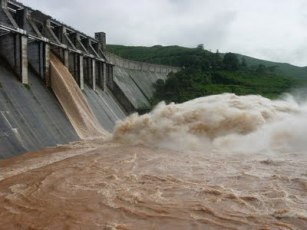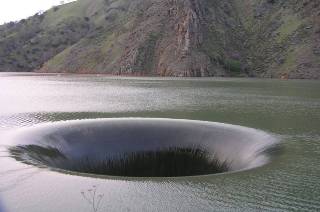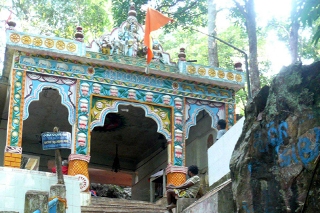Kolab Dam, Koraput, Odisha

At an altitude of about 3000 ft. above sea level on river Kolab, stands the majestic Kolab Reservoir generating Hydro Electric Power.15 km from Koraput, the river Kolab makes a spectacular jump at Bagra to form a reservoir called the “Upper Kolab Irrigation Project”. An ideal place for an outing, it is also a panacea for city dwellers.

Kolab Botanical Garden stands beside the Majestic Kolab reservoir is ideal for weekend picnic for people all over the district. This place is highly admired for its scenic beauty, attracting tourists for weekend picnic and boating. Kolab Botanical Garden stands beside the Majestic Kolab reservoir is ideal for weekend picnic for people all over the district.

This place is highly admired for its scenic beauty, attracting tourists for weekend picnic and boating. The well maintained botanical garden has over 200 varieties of flowering plants. Even the night view of the reservoir is worth experiencing.
Duduma Waterfall, Koraput, Odisha

The majestic waterfall, also known as Matsya Tirtha falls from a height of 175 meters. A hydro electric project with its winch developed amidst deep greenery is a place for pleasure.Three KMs away from Duduma waterfall, a small village of Ankadeli draws the attention of foreign tourists to its weekly markets on Thursdays where the most primitive tribe the Bondas, come from the remote, inaccessible dense forest.Jolaput is known for its newly constructed dam reservoir. The lake formed by the dam is 68.2 Sq. Kms. Its a picnic spot, 88 Kms from Koraput.

It is 165 Mts. from Visakhapatnam on the river Machkund are the biggest water falls of Andhra Pradesh. The water is diverted into the Machkund reservoir and the over flow subsequently run throught a caryon. The Dumduma Falls on the River Machhakunda is one of the most popular tourist spot in Orissa. The Dumduma Falls is also known as the Matsya Tirtha and it is the site of the famous Machhakund Hydro-Electric Project. The Dumduma Falls in the Eastern Ghats drops from a height of about 157 meters and is categorized as a horsetail falls.

Investigation and research on the Dumduma Falls began in the year 1941 when the plan for generating hydro-electric power was chalked out. It was around the year 1946, that the scheme was implemented. 104cfs are drawn from the Dumduma hydro electrical plant which hints at the fact that that this waterfall in Orissa is still very active.
Gupteswar Temple, Koraput, Odisha

Gupteswar is a cave temple located on the banks of Kolab River, about 80 km from Koraput.Important cave shrine of Lord Shiva Situated on a lime stone hill amidst scenic bliss.
The temple houses a sacred swayambhu Shivling called Gupteswar, which literally means the ‘Hidden God. Shivratri is the major festival celebrated here amidst much pomp and splendor.

The fame of the temple is not restricted to Orissa but it is also well known in other parts of the country. The people of Chhattisgarh refer to the shrine by the name Gupta Kedar. Gupteswar can be reached through a forest tract which starts from the east of the Ramagiri Hill up to a distance of 19 km.
Tikarpada, Angul, Odisha
Satkosia wildlife sanctuary is one of the most beautiful wildlife sanctuaries in India as well as very important eco-tourism site. The down stream of River Mahanadi after Hirakud Dam flows through a stunning 22KM narrow gorge (1,500 to 2,500 ft high) of Satkosia before falling into the Bay of Bengal.It is located in the districts of Angul, Nayagarh and Boudh. The Satkosia Gorge Sanctuary is extended in an area of 745.52 sq.km. with a rare place of beauty where nature is generously bountiful in all its forms of flora and fauna. Here, the River Mahanadi divides the entire area into two parts which are accessible from two separate districts- Nayagarh and Boudh. On the south of the river is a high range of hills and on the north are the mountainous parts of Athamallik and Angul subdivsions. The scenic beauty of Satkosia with its undulating mountain skyline is mesmerising. The sylvan beauty of the forest with captivating fragrance is simply bewildering.
The meandering Mahanadi flowing closeby amidst bountiful hills, forms here the mightiest gorge of India, twenty-two km long. The nature camp is located on the banks of Mahanadi. The camps have 10 tents with separate toilet facility (Indian style) on the back of the each tent. Each tent has two camp type beds, comfortable enough for a good night sleep. Blankets are provided as it gets real chilly in the winter times. 5 of the tents are called Gharials (alligators) and 5 of the other ones are called Maggars (crocodiles).

It is acclaimed as one of the World's most enchanting spot. The place is ideal for boating, angling and adventure. The forests and hills around the village have varieties of fauna to fascinate the visitors. A Gharial Crocodile Sanctuary, setup here, has enhanced the importance of the place.
Hirakud Dam, Sambalpur, Odisha
Hirakud Dam built on Mahanadi River is the longest dam in India. The overall length of the main dam is 4.8 km, and the total length is 25.8km with dam and dykes taken together. The dam is about 15 km upstream of Sambalpur town in State of Orissa and was the first post independence major multipurpose river valley project in India. The dam irrigates 436000 ha of CCA in Mahanadi delta and has an installed capacity of 307.5 MW. Hirakud Dam is a composite structure of Earth, Concrete and Masonry. Hirakud Dam intercepts 83400 sq. km (32200 sq miles) of Mahanadi catchments. It has a reservoir spread of 743 sq km at full reservoir level and the reservoir has a storage of 5818 M. Cum with gross of 8136 M Cum.
 Hirakud Dam is built across the Mahanadi River, about 15 km from Sambalpur in the state of Orissa in India. Built in 1956, the dam is the worlds largest earthen dam.[1] Behind the dam extends a lake, Hirakud Reservoir, 55 km long. Hirakud Dam is one of the longest dams in the world, about 16 mi (26 km) in length. It was the first major multipurpose river valley project started after Indias independence.Construction history
Hirakud Dam is built across the Mahanadi River, about 15 km from Sambalpur in the state of Orissa in India. Built in 1956, the dam is the worlds largest earthen dam.[1] Behind the dam extends a lake, Hirakud Reservoir, 55 km long. Hirakud Dam is one of the longest dams in the world, about 16 mi (26 km) in length. It was the first major multipurpose river valley project started after Indias independence.Construction history
Before the devastating floods of 1937, Sir M. Visveswararya proposed a detailed investigation for storage reservoirs in the Mahanadi basin to tackle the problem of floods in the Mahanadi delta. In 1945, under the chairmanship of Dr. B. R. Ambedkar, the then Member of Labour, it was decided to invest in the potential benefits of controlling the Mahanadi for multi-purpose use. The Central Waterways, Irrigation and Navigation Commission took up the work.





Nice spot of odisha we proud of....
ReplyDelete